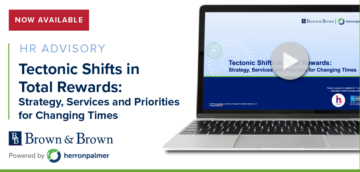Key Compensation Trends in Q3 2025
Inflation Has Stabilized — But Pressure Remains
While the US inflation rate (currently 2.67%) is now below reported merit budget increases (3.2%) and starting to resemble pre-pandemic norms, employees continue to feel economic strain, particularly from high housing costs and regional cost of living disparities (Y Charts and Mercer).
Skills-Based Pay Is Accelerating
The shift toward skills-based compensation continues to gain traction, especially in tech-centric industries where emerging technologies and specialties demand rapid adjustments in pay strategy. Employers like IBM and Walmart have successfully tackled the challenge over the last few years, so employees are not only incentivized to learn but also motivated to utilize their skills (TrustSkills).
Remote Work Continues to Blur Labor Market Boundaries
As many companies push return-to-office (RTO) mandates, others — like Spotify and X (formerly Twitter) — are doubling down on “Remote First” compensation strategies. The definition of your labor market is no longer just about your organization’s geography; it’s about understanding your competition, wherever they are located (P&C 2025).
Pay Transparency Becomes a Global Norm
As Gen Z enters the workforce in larger numbers, organizations are seeing a clear drop in application rates when salary ranges aren’t posted. Transparency is now a competitive advantage and not just a compliance checkbox. Legislation continues to roll out across the U.S., Canada and Europe, and the global talent market is responding accordingly (Payscale).
What Employers Need to Do Now
Keep Your Salary Structures Current
Resist the urge to let salary structures stagnate during a labor market cooldown. While aging structures by 1.5–2% is a best practice recommendation backed by notable industry leaders, many organizations are taking a conservative approach. However, falling behind market benchmarks can cause misalignment that’s costly to recover from when trends shift again.
Stay Grounded in the Cost of Labor
Ensure you have a clear understanding of both your local labor market and broader national trends. Remote work has redistributed talent expectations, and salary structures must reflect the actual cost of labor while also considering the cost of living — especially when the two diverge significantly. Employees feel those differences, so ensure you are rooted in the cost of labor while using other benefits to close the gap with their living expenses in meaningful ways that your employees will appreciate.
Double Down on Employee Development
Retention is the name of the game. Invest in upskilling your workforce and ensure a clear path for growth to translate into career and compensation opportunities internally. Employees who develop new capabilities without seeing upward mobility will be more likely to take those skills elsewhere, leaving you to start over.
Final Thoughts
Q3 is a pivotal moment for HR and compensation leaders. While the labor market may be showing signs of softening, strategic investment in compensation alignment, development pathways and total rewards will separate the companies that simply ride the wave from those that build sustainable, long-term talent strategies. It’s not just about weathering the pendulum swing of the labor market — it’s about building a foundation that can thrive in whichever direction it swings next.
Resources:
Y Charts: Rate of Inflation
Mercer: Results of the March 2025 US Compensation Planning Survey
P&C 2025: Payroll and Compensation Trends in 2025
Payscale: Legislative Lowdown: June 2025
SkillsTrust: Skills Based Pay is On the Rise – Should you Consider it?


